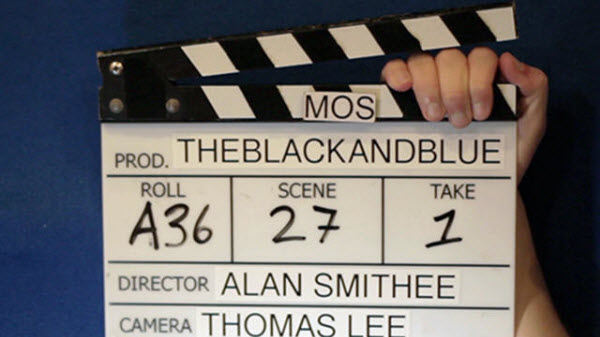The clapperboard, also known as the slate, is a fundamental tool in the film industry, serving as one of the most iconic symbols of cinema. Held by a crew member during film and television shoots, the clapperboard is a device made typically from wood or plastic, featuring a hinged arm that produces a distinctive sound when struck. This board is inscribed with various details about the production, such as the film’s title, the director’s name, the cinematographer, and the scene number being shot. The primary purpose of this tool is to aid in the synchronization of sound and picture during the editing process, as well as to identify and distinguish between different scenes. Despite the advancements in film production technology in recent years, the clapperboard remains an indispensable tool in filmmaking due to its significant utility.
A Brief History of the Clapperboard
The origins of the clapperboard date back to the early days of cinema. It was first introduced by Australian filmmaker and producer William Francis Thring, who later became the head of Efftee Studios in Melbourne. Initially, the device consisted of two sticks held by a crew member that were struck together at the start of a scene, while another crew member held a slate with information about the shot being filmed. This method was later refined by pioneering sound engineer Leon M. Leon, who combined Thring’s clapping sticks with the slate, creating the modern clapperboard that is still in use today.

The Importance of the Clapperboard in Filmmaking
In traditional film production, scenes are shot using two main recording devices: cameras for capturing the visual elements and separate equipment for recording sound, a method known as double-system recording. During editing, when the picture and sound are combined, editors often face challenges in synchronizing audio with the corresponding visual footage. To address this, a method for aligning the audio and visual tracks was essential, and this is where the clapperboard comes into play. The visible clapping of the board and the audible sound it makes allow editors to synchronize the two by aligning the clap’s visual and audio markers.
Although technological advancements have led to the development of systems that record sound directly onto the film in a single-system recording setup, making the clapperboard seemingly redundant, it continues to be widely used. This persistence is due to several reasons: first, the single-system recording often produces lower-quality audio compared to double-system recording. Second, editing footage recorded using the single-system method can be more challenging due to certain technical limitations. As a result, the film industry has continued to rely on the double-system recording method to maintain high-quality production standards.

Modern-Day Clapperboards and Their Evolution
Traditionally, clapperboards consisted of a black wooden board with a hinged stick attached at the top for clapping. Modern versions often feature two wooden sticks attached above a whiteboard, which can be made of wood, plastic, or clear glass. The hinged sticks now often have intersecting black and white stripes, or in some cases, multiple colors, to ensure visibility in various lighting conditions. Additionally, contemporary clapperboards may include digital displays that synchronize the time code shown on the board with the camera’s internal clock, theoretically making it easier for editors to match video and audio time codes. However, electronic time codes can sometimes fail during long shooting days, making the traditional manual clapper method indispensable as a backup for synchronizing footage and sound.

Details on the Clapperboard
A typical clapperboard contains essential information about the film, including the date, production title, director’s name, director of photography, and scene details. There are two common styles for listing scene information: the American and the European methods, which differ in how they organize scene numbers, camera angles, and take numbers. The person responsible for operating the clapperboard is often called the “clapper loader” or “second assistant camera,” who works closely with the script supervisor to update the information between takes.

Additional Uses and Special Cases
Apart from its primary role in synchronizing sound and picture, the clapperboard also has other functions. For instance, in scenes shot without sound, known as MOS (Mit Out Sound), the clapperboard is still used to provide visual information to the editor, even though the clapping sound is not recorded. In these cases, the crew might place their hands between the sticks to indicate that sound synchronization is unnecessary. Additionally, there is a “tail slate” technique, where the clapperboard is held upside down to indicate it is being used at the end of a scene. This method is generally reserved for moments when the director wants to maintain the actors’ focus on their performance or when certain camera movements make it challenging to slate at the beginning of a shot. In close-up shots, where the camera is positioned near the actor’s face, the clapperboard operator may gently clap to avoid startling the performer and disrupting their immersion in the scene.
